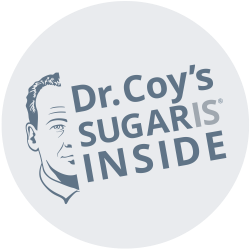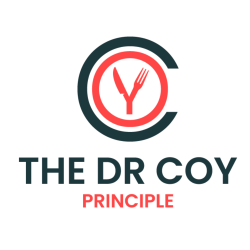Acidosis & Cancer
Acidosis is a condition in which the body’s tissues become excessively acidic due to a drop in pH levels. Within tumour tissue, acidosis accelerates tumour progression and can cause cancer cells to become resistant to treatment. It promotes several mechanisms that lead to invasiveness, metastasis, and resistance to immune responses and chemotherapy in cancer cells.
Acidosis develops in tumours cells due to hypoxia. Hypoxia occurs when oxygen levels are low in tumour tissue. This happens because cancer cells grow rapidly, consuming large amounts of energy and oxygen. As the tumour grows, its demand for oxygen and nutrients often exceeds the available supply, creating a low-oxygen, acidic environment around it. Cancer cells often favour glycolysis for energy production, even when oxygen is available—a behaviour known as the Warburg Effect. Under hypoxia, they rely on glycolysis even more.
Glycolysis breaks down glucose (sugar) without oxygen, producing lactic acid as a by-product. The buildup of lactic acid creates an acidic environment around the tumour cells and tissue, triggering processes that help cancer cells to survive, spread, and resist treatment.
TKTL1 & Sugar
Cancer cells are highly dependent on sugars, such as glucose, to grow. They rely on glucose for fermentation – a process that provides energy without oxygen.
When the German scientist Dr Johannes Coy discovered the TKTL1 gene, he identified its crucial role in glucose metabolism. When the body consumes glucose, TKTL1 is activated to facilitate the breakdown of glucose into energy and ribose (a key building block for new DNA). Tumour cells exploit this process to repair themselves and produce new cancer cells.
Additionally, TKTL1 contributes to the increased lactic acid production from glycolysis, which helps tumour cells disable immune responses and alters the DNA of cancer cells.
Dr Coy’s groundbreaking findings show that minimising glucose consumption can prevent the activation of TKTL1. This deprives cancer cells of their primary fuel, limits lactic acid buildup, and weakens the cells, making them more susceptible to treatment.
Processes Associated with Tumour Acidosis
Enzymes called proteases are more active in acidic environments. Excessive protease activity can break down the extracellular matrix, the structural ‘scaffolding’ surrounding cells. As a result, cancer cells can move and spread more freely throughout the body.
Acidosis also causes the DNA within cancer cells to undergo frequent mutations, leading to a range of genetic variations within the tumour. This genetic diversity makes the tumour more difficult to treat, as some cancer cells may develop resistance to treatment.
Moreover, acidic conditions can compromise the body’s immune response. Typically, the body is equipped with T-cells and natural killer cells that identify and attack cancer cells. However, the low pH in and around the tumour has a suppressive effect on these immune cells, inhibiting their proper function. As a result, the immune system is unable to recognise and defend against the tumour, allowing cancer cells to divide and spread.
Acidosis is also linked to metastasis due to the increased release of exosomes. Exosomes are tiny particles that cells use to communicate with one another. They carry signals that prepare distant areas of the body to support the spread of cancer cells, ultimately making it easier for tumours to establish themselves in new locations.
Lastly, acidosis contributes to drug resistance in cancer cells. Certain proteins, known as drug-resistance proteins or efflux pumps, function like pumps that expel chemotherapy drugs from the cells undergoing treatment. As a result, the drugs cannot remain inside the cancer cells long enough to kill them effectively. Acidic conditions amplify the activity of these proteins, enhancing their ‘pumping’ effect. Consequently, cancer cells are more likely to survive and thrive despite treatment.
Consuming the Right Kind of Sugar
Natural sugar alternatives, such as galactose and mannose, are valuable tools for strategically addressing a cancer diagnosis and combating issues associated with acidosis. These particular sugars are special, as they can be broken down into slow-releasing, sustained energy, but cannot be used by TKTL1 as fuel. Making them safe to consume before, during and after a cancer diagnosis.
Galactose:
Galactose is present in breast milk, yoghurt, and kefir, and can be derived from lactose. With a glycaemic index of 20, much lower than that of glucose, galactose helps maintain stable blood glucose levels.
Cancer cells cannot use sugars like galactose to metastasise in the same way they use glucose. While galactose provides energy for the body, fermenting cancer cells cannot utilise it as efficiently. Galactose inhibits cancer cell fermentation and redirects them to the combustion pathway, an alternative metabolic route that is far less efficient than glycolysis for rapid energy production.
Substituting glucose with galactose in the diet could complement cancer treatments by depriving cancer cells of the fuel they need to repair and replicate during chemotherapy and radiotherapy
Mannose:
Mannose is a simple sugar naturally found in fruits and the human body. It has a glycaemic index much lower than that of classic sugars.
Mannose has been documented to influence certain metabolic pathways, with studies suggesting that it can slow the growth of cancerous tumours. Mannose can interfere with glycolysis and the pentose phosphate pathway (PPP), inhibiting cancer cell growth and survival, potentially improving the efficacy of chemotherapy.
Studies on colorectal cancer have demonstrated that mannose can enhance the chemotherapy drug 5-FU by affecting the PPP and may even inhibit the growth of cancer cells that are resistant to 5-FU.
To summarise, acidosis is key in cancer progression, driving tumour growth, spread, and treatment resistance by affecting metabolism, immune function, and cell structure.
Dr Coy’s discovery of TKTL1 links glucose metabolism to tumour survival, showing that reducing glucose intake can slow tumour growth and improve treatment outcomes. Dr Coy’s natural sugar alternatives, such as galactose and mannose, offer promising solutions by disrupting the metabolic processes that fuel cancer cells. These sugars not only provide sustained energy but also prevent cancer cells from using glucose to grow and spread. Incorporating these natural sugars into a diet plan may help weaken the tumour’s ability to grow, spread, and resist treatment.
If you would like to learn more, feel free to contact us.


